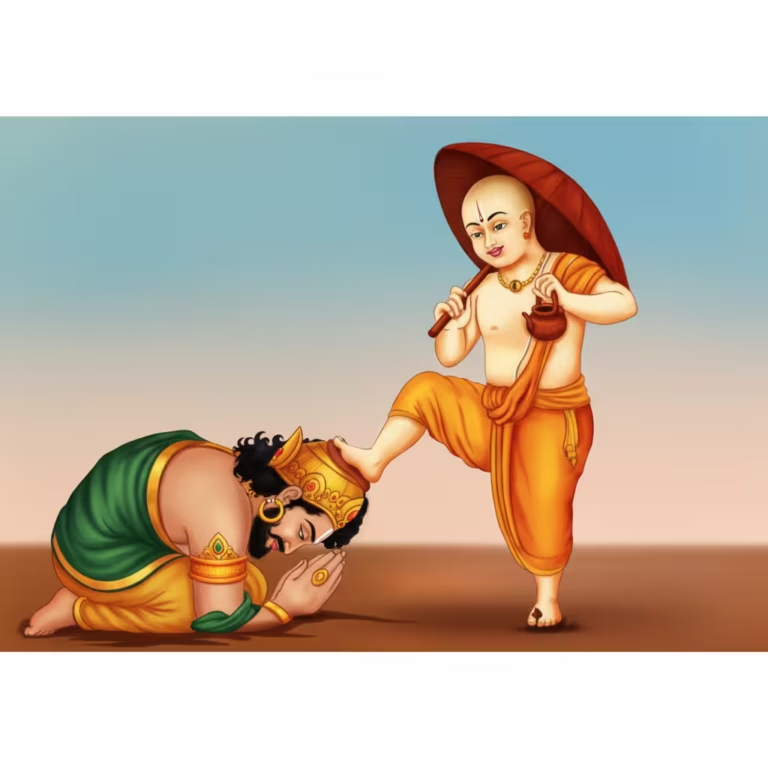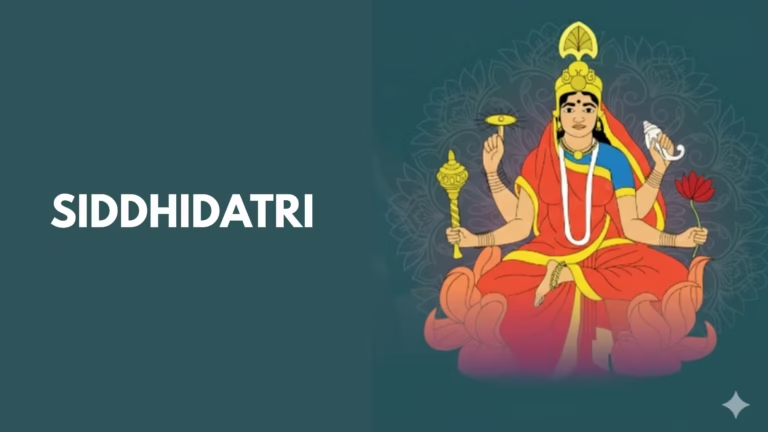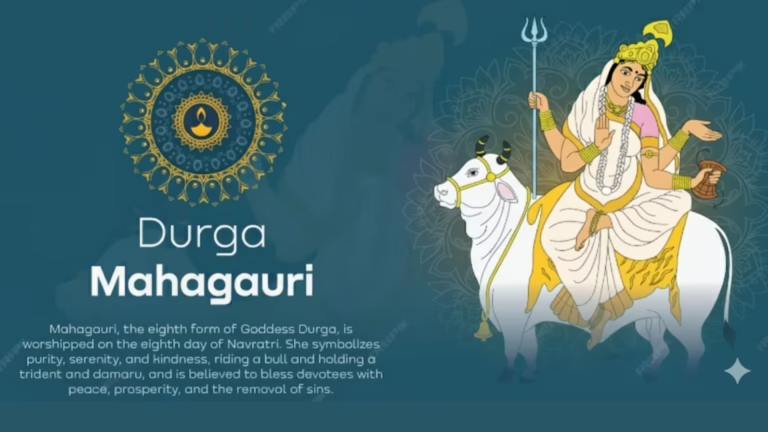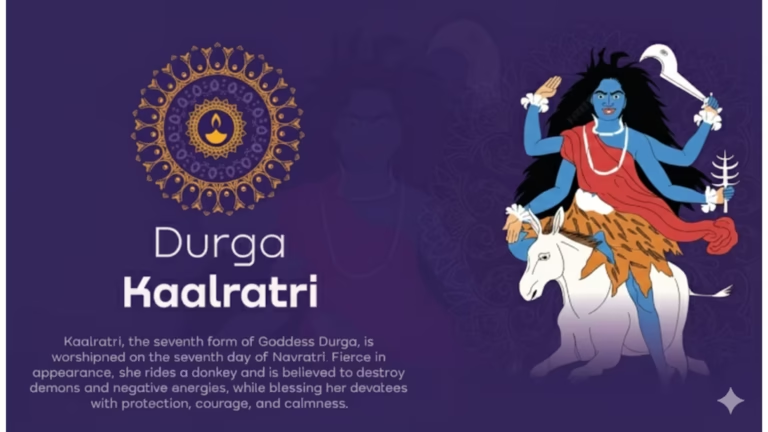Who is Maharshi Valmiki (Adi-Kavi) — Purpose and Source-Scope
In the Indian poetic tradition, Maharshi Valmiki is revered as the Adi‑Kavi (the first poet). The aim of this life‑sketch is to include only those episodes and narrative strands that are explicitly attested in the Puranic corpus itself; therefore, widely known folk legends, later traditional accretions, or modern imaginative reconstructions are intentionally excluded here. Specifically, the presentation is based on references available in the Skanda Purana, the Brahmanda Purana (particularly the Adhyatma Ramayana embedded within it), and the Vishnudharmottara Purana. In this sense, the life‑account attempts not only devotion but source‑awareness and textual fidelity, so that readers receive a Puranic, reliable, and SEO‑friendly synthesis in one place.
“Only Puranic Evidence”: Clear Separation from Folklore
Many popular folk‑stories about Valmiki—such as assorted versions of the bandit‑to‑sage motif or anecdotes added by later Ramayana traditions—are widespread in Indian literature. However, this article admits only those facts that are directly mentioned in the Puranas. For example, various sections of the Skanda Purana discuss Valmiki’s birth, conversion, the episode of Valmika‑udbhava (the emergence from an anthill after long meditation), the Valmikesvara linga in the Avanti region, and the progression from Rama‑name initiation to poetic perfection. Likewise, the Adhyatma Ramayana (traditionally regarded as embedded in the Brahmanda Purana) clearly narrates Sita’s refuge in Valmiki’s hermitage, the upbringing of Lava‑Kusha, and their singing of the Ramakatha. By contrast, certain oft‑repeated tales—e.g., nude‑narrative motifs or late poet‑lore—if not Puranically attested, will be mentioned only for comparison, not treated as decisive history.
Puranic Attestations: Where Valmiki is Mentioned
The Skanda Purana mentions Valmiki in at least three prominent places: (1) the Vaishakhamasa‑Mahatmya (within the Vishnu/Vaishnava section), which speaks of Rama‑name initiation and the seed of rebirth/name‑emergence; (2) the Avantikshetra‑Mahatmya (Avanti‑khanda), which extols the Valmikesvara linga in the Avanti region, recounts Valmika‑udbhava, and describes the fruitive promise related to poetic inspiration; and (3) the Nagara‑khanda (Tirtha‑Mahatmya) chapter on Mukhara tirtha, where the narrative of the Brahmana Loharjangha and his conversion up to becoming Valmiki is presented clearly. The Adhyatma Ramayana (embedded in the Brahmanda Purana) contains the Sita‑refuge and Lava‑Kusha episodes. The Vishnudharmottara Purana mentions Valmiki’s greatness in discussions on avatara‑tattva and divine portions, which some traditions interpret as a Brahma‑portion (or other divine portion).
Birth and Lineage — Puranic Narratives
Puranic accounts present Valmiki’s manifestation in varied narrative frames, yet a consistent line emerges: his samskara‑identity is rooted in a Brahmana lineage. In the Avantikshetra‑Mahatmya, we read of a Brahmana Sumati and his wife Kaushiki (of the Bhrigu tradition), whose son Agnisharma strays due to calamities such as famine/drought into a life entangled with brigands, and is eventually led to conversion by the Saptarishis. By contrast, in the Nagara‑khanda chapter on Mukhara tirtha, we encounter the story of a Brahmana’s son named Loharjangha—who, pressed by the dire need to support aged parents and his wife, inclines to theft, receives admonition from the Saptarishis (especially Pulaha), and after prolonged mantra‑japa and meditation undergoes Valmika‑udbhava. Across these variant readings/adaptations, names such as Agnisharma/Loharjangha/Vaishakha, the Bhrigu lineage, and Brahmana birth appear at their respective places, indicating that in Puranic schools the Valmiki‑charita traveled through multiple local and manuscript traditions.
The Etymology of “Valmiki” (Valmika‑udbhava)
The name Valmiki is linked to valmika—an anthill. In the Avantikshetra‑Mahatmya, after the Saptarishis—especially Atri—initiate Agnisharma into Rama‑name japa, he sits motionless for years in meditation; in that span, a vast anthill forms over him. When the rishis return and clear the anthill, the reborn ascetic becomes renowned as “Valmiki.” The Nagara‑khanda’s Loharjangha episode conveys the same motif strongly: during long japa‑meditation an anthill encases him; when the sages split it and bring the ascetic out, they bless him—“Since you dwelt within a valmika, your name shall be Valmiki.” This etymological framing unites the tapas‑siddhi (accomplishment through austerity) and nama‑sadhana (name‑meditation) that the Puranas foreground for the Adi‑Kavi.
Turning Away from Sin (Dialogue with the Saptarishis)
In both Skanda‑Puranic narratives—Avanti and Mukhara tirtha—the Saptarishi dialogue becomes the crucial turning point. When Agnisharma or Loharjangha becomes entangled in adharmic acts due to livelihood pressures, the sages awaken his conscience with a pointed ethical question: “If you rob us of garments/wealth and thus incur sin, will your father, mother, wife, or son share your sin?” Each of them answers plainly that karmic fruit accrues to the doer alone; they will not share the sin. This is a sharp assertion of the karma‑phala doctrine. Moved by this self‑realization, he asks for initiation, receives the Rama‑name, engages in unceasing japa‑dhyana, abandons tamasic acts, and ultimately attains poetic perfection. Thus, with Puranic warrant, the conversion narrative also becomes a potent lesson in moral philosophy.
The Glory of the Rama‑Name (Puranic)
In the Vaishakhamasa‑Mahatmya, the glory of the Rama‑name is portrayed as unparalleled: the narrative states that the merit of Vishnu‑Sahasranama equals the fruit of chanting “Rama.” Consequently, the Puranas explicitly commend nama‑smarana (remembrance of the divine name) and exclusive japa as a path of sadhana. Therefore, in their initiatory counsel, the sages affirm that stable realization arises through Rama‑japa; over prolonged meditation, that japa becomes the seed of poetic inspiration, later blossoming as the Ramayana, the first of narrative poems.
Poetic Attainment and the Composition of the Ramayana — A Puranically Supported View
The Avanti account adds a crucial thread: after conversion, Valmiki proceeds to Kushasthali, receives the grace of Maheshvara (Shiva), and there composes the Ramayana. The chapter itself declares that “this narrative poem, the Ramayana, is the first among story‑poems,” providing a Puranic basis for Valmiki’s title as Adi‑Kavi. Thus, from Rama‑bhakti through nama‑sadhana to kavita‑utpatti (the birth of poetry) and finally kavya‑srishti (poem‑creation), the path aligns closely with the Skanda‑Puranic portrayal.
Valmikesvara and Related Tirthas
In Avanti (Ujjayini), the Valmikesvara Shiva‑linga is praised in the Skanda Purana. Its phala‑shruti (promised fruit) states that darshana and worship of this linga awaken poetic power. The narrative links Agnisharma’s (or, in other readings, Loharjangha/Vaishakha’s) conversion and Valmika‑udbhava up through poem‑composition with this very tirtha. A parallel form occurs at Mukhara tirtha in the Nagara‑khanda, where the sages’ admonition, jata‑ghota (a chant type akin to a sama/japa form), and prolonged austerity culminate in poetic genius. These tirtha‑frames are not mere geographic markers; they assert that through the confluence of sacred place and name‑sadhana, genuine moral‑spiritual transformation is possible.
Ashram Life: Sita’s Refuge and the Upbringing of Lava–Kusha (Puranically Supported Ramayana Episodes)
In the Uttarakanda of the Adhyatma Ramayana within the Brahmanda Purana, we find the renowned episode where Sita, owing to fear of public reproach in Ayodhya, is left in the forest and finds refuge in Maharshi Valmiki’s ashram. There Lava and Kusha are born; the ashram becomes the center of their samskara, education, and ethical formation. With its Vaishnava‑spiritual perspective, the Adhyatma‑Ramayana interprets the story through bhakti and jnana—affirming Rama’s Parabrahman nature, the power of nama‑smarana/shravana, and Sita’s pativrata purity. In this ashram setting, Lava‑Kusha receive not only doctrinal grounding in divine character but also a systematic initiation into poetic recitation and dharma‑education, later bearing fruit in Ramakatha‑gana.
Lava–Kusha and the Singing of the Ramakatha (Puranic Tradition)
According to the Adhyatma Ramayana and related Puranically supported traditions, Lava–Kusha, under Valmiki’s initiation, learn to recite/sing the Ramakatha. During the Ashvamedha sequences in Ayodhya, this public recitation attains special significance—its complete hearing leads to Rama’s transformation of heart and the recognition of his sons. Artistically, this reflects the Puranic tradition’s emphasis on listening to sacred narrative as a form of worship and as a means to dharma‑insight and grace. Thus Valmiki stands not only as kavi‑rishi but also as acharya, with Lava–Kusha carrying forward a living poetic lineage.
Ethical Outlook and Teachings
Four threads deserve emphasis in the Puranic episodes of Valmiki’s life: tapas, nama‑smarana, ahimsa/penitence, and the guru‑shishya tradition. The Saptarishis’ teaching on karma‑phala and the Rama‑name initiation together show that guileless remembrance and long austerity can lead a person out of the maze of sin. The prolonged, nearly motionless meditation during Valmika‑udbhava is portrayed as a form of interiorized religion. In both Avanti and Mukhara tirtha narratives, we encounter a practical ethic of ahimsa and prayaschitta: renouncing violence‑based brigandage, confessing fault, and transforming life through worship. Finally, the acharya‑parampara—with Valmiki as the guardian‑teacher of Sita and the educator of Lava–Kusha—affirm the lived and transmitted form of dharma.
Valmiki and the Question of a Divine Portion/Avatar (Where Puranas Bear Witness)
In the Vishnudharmottara Purana, amidst discussions of avatara‑tattva and divine portions, Valmiki appears with a divine share. Some traditions interpret this as a Brahma‑portion, while other Vaishnava readings hint at a Bhagavad‑portion/Vishnu‑related manifestation. The variety shows how Upapurana traditions, lineages of teachers, and manuscript families produced differing expositions. The broad consensus remains: Valmiki is a divinely favored kavi‑rishi, whose poetic creation is celebrated by Puranic authors as mahimagana (hymning of greatness).
Poetic Style, Sense of Metre, and the Puranic View of the Ramayana
Within the Puranic ambit, the Ramayana is seen as a narrative poem; the Avanti account labels it “first among story‑poems.” The Puranas do not delve into technical poetics (chandas‑sutras, metrical gaNas, etc.) here; instead, they foreground auditory appeal and ethical‑religious orientation as the poem’s core. The rise of poetry from name‑sadhana mirrors a Puranic image of inner ascetic discipline ripening into kavya. Holding together the divine awareness of the Adhyatma‑Ramayana and the human ideals of the epic’s narrative frame, the tradition presents Valmiki as both rishi and kavi.
Associated Sites/Peethas (Puranic‑Based, Brief List)
- Valmikesvara at Avanti (Ujjayini): Linked to promises of poetic inspiration; the narrative arc runs through conversion, Valmika‑udbhava, and worship of Maheshvara at Kushasthali, culminating in composition.
- Mukhara tirtha (Nagara‑khanda): Presents the Loharjangha account with Saptarishi dialogue, karma‑phala doctrine, jata‑ghota/japa, Valmika‑udbhava, and the final recognition of Valmiki. Some readings also mention a figure Vaishakha, underscoring how the bandit‑to‑sage motif is embraced as a model of moral redemption.
Popular Tales vs. Puranic Evidence (A Clear Distinction)
Later literature and folk tradition often circulate names like “daku Ratnakara” (the bandit Ratnakara) or other highly dramatized motifs; yet, the Puranic textual witnesses emphasize names such as Agnisharma/Loharjangha/Vaishakha, Brahmana birth, and the decisive Saptarishi dialogue. Likewise, the phonetic trope of “mara–Rama” is alluded to as a poetic hint in the Avanti chapter, while in Mukhara the japa‑mode is framed as jata‑ghota (a sama/mantra‑like chant). Where there are variant notes or scholia, they should be received as commentary, not as the primary historical thread. The decisive basis remains the Puranic evidence.
Significance and Legacy
Valmiki’s legacy stands on three storeys—dharma, poetry, and the Sanskrit tradition. In dharma, he exemplifies penitence and name‑sadhana; in poetry, he is the first creator of narrative kavya, a status the Puranas themselves affirm; and in the Sanskrit tradition, he embodies the guru‑shishya ideal—offering refuge and education to Sita, Lava, and Kusha, and bequeathing a living tradition of Ramakatha‑gana. Even today, at tirthas like Valmikesvara, the promise of poetic grace remains a feature of worship, testifying that Puranic narratives are not mere archives of the past but inspirations for conduct and sadhana in the present.
FAQs (Puranic‑Based Answers)
Q. Was Maharshi Valmiki born a Brahmana?
A. In Skanda‑Puranic variants, the Avanti chapter names Agnisharma, son of Sumati–Kaushiki (of the Bhrigu line), while the Nagara‑khanda at Mukhara tirtha narrates Loharjangha—both signal a Brahmana birth.
Q. What is the Puranic source behind the “bandit‑to‑sage” conversion?
A. Both Avanti and Mukhara tirtha present Saptarishi dialogues leading to conversion. In Avanti, sages like Atri instruct Rama‑japa; in Mukhara, the Saptarishis (especially Pulaha) enjoin jata‑ghota japa, culminating in Valmika‑udbhava—all within the Skanda Purana.
Q. Where is the teaching on the Rama‑name located?
A. In the Vaishakhamasa‑Mahatmya, the Rama name is declared equal in fruit to the Vishnu‑Sahasranama; the Avanti chapter likewise prescribes Rama‑japa as part of the initiation.
Q. What is the Puranic basis for Sita’s refuge and the birth of Lava–Kusha?
A. The Uttarakanda of the Adhyatma Ramayana (embedded in the Brahmanda Purana) narrates Sita’s refuge in Valmiki’s ashram, the birth and upbringing of Lava–Kusha, and their later recitation leading to recognition before Rama during the Ashvamedha.
Source‑List (Puranas/Critical Translations Only)
- Skanda Purana — Vaishakhamasa‑Mahatmya (Vaishnava/Vishnu‑khanda), ch. 21: the glory of Rama‑name, initiation, and the hint of rebirth/name‑emergence (paralleling Vishnu‑Sahasranama merit).
- Skanda Purana — Avantikshetra‑Mahatmya (Avanti‑khanda), ch. 24: the greatness of Valmikesvara; the conversion of Agnisharma (Sumati–Kaushiki; Bhrigu line); Valmika‑udbhava; going to Kushasthali to compose the Ramayana; the epithet “first among story‑poems.”
- Skanda Purana — Nagara‑khanda (Tirtha‑Mahatmya), ch. 124 “Origin of Mukhara tirtha”: the narrative of Loharjangha (a Brahmana), the Saptarishi dialogue, jata‑ghota/japa, Valmika‑udbhava, poetic attainment, and the establishment of Valmiki.
- Brahmanda Purana — Adhyatma Ramayana (primarily Uttarakanda): Sita in Valmiki’s ashram; the birth/upbringing of Lava–Kusha; Ramakatha recitation; recognition before Rama during the Ashvamedha. (Tradition holds Adhyatma‑Ramayana to be embedded in the Brahmanda Purana; this is the form widely received in accepted editions/translations.)
- Vishnudharmottara Purana (Book 3; avatara‑tattva/divine‑portion discussions, ca. chs. 118–121): reference to Valmiki in terms of a divine share; some traditions read this as a Brahma‑portion, while Vaishnava readings suggest a deva‑avatar relation.
Conclusion
This Puranic reconstruction of Valmiki’s life brings together conduct, devotion, and study. The threads—memory of Brahmana birth; the descent into brigandage due to famine and hardship; the Saptarishis’ unbending rule of karma‑phala; the inner journey through Rama‑japa; long, motionless tapas culminating in Valmika‑udbhava; worship at Valmikesvara and Kushasthali; and the ashram life where Sita finds refuge and Lava–Kusha are formed and taught to sing the Ramakatha—together weave the life‑cycle of a rishi‑poet with explicit Puranic threads. In this cycle Valmiki’s legacy takes shape: by casting the human story of moral redemption into poetry, he orients Indian sensibility. Every part of this account rests on Puranic bases; where variant readings occur, they are retained in commentarial mode.
References & Links
Primary Puranic Texts (online reading):
- Skanda Purana — English translation (Wisdom Library): https://www.wisdomlib.org/hinduism/book/the-skanda-purana
- Brahmanda Purana — overview & translation (Wisdom Library): https://www.wisdomlib.org/hinduism/book/the-brahmanda-purana
- Adhyatma Ramayana — English translation (Archive.org item): https://archive.org/details/AdhyatmaRamayanaEnglishTranslation
- Adhyatma Ramayana — scanned text PDF (Archive.org): https://archive.org/download/TheAdhyatmaRamayana/The%20adhyatma%20ramayana_text.pdf
- Vishnudharmottara Purana — study & chapter overviews (Wisdom Library): https://www.wisdomlib.org/hinduism/essay/vishnudharmottara-purana-art-and-architecture
Sanskrit texts & critical resources:
- Vishnudharmottara Purana — Sanskrit (GRETIL, selected chapters 3.343–3.353): https://gretil.sub.uni-goettingen.de/gretil/1_sanskr/3_purana/vd3343pu.htm
- GRETIL (Göttingen Register of Electronic Texts in Indian Languages) — homepage: https://gretil.sub.uni-goettingen.de/
Public-domain scans:
- Skanda Purana — Motilal Banarsidass edition (Archive.org): https://archive.org/details/dli.bengal.10689.12961
- Skanda Purana — Gita Press Gorakhpur (Archive.org): https://archive.org/details/skanda-puran-gita-press-gorakhpur
- Vishnudharmottara Purana — Part III (English) (Archive.org): https://ia601500.us.archive.org/29/items/in.ernet.dli.2015.78330/2015.78330.The-Vishnudharmottara-Part-Iii_text.pdf
- Vishnudharmottara Purana — Third Khanda Vol II (English) (Archive.org): https://archive.org/details/vd03engresearchvishnudharmottarapuranathirdkhandavoliidrpriyabalashah1961
Read Also : महर्षि वाल्मीकि: पुराण-आधारित जीवन-चरित



